
The Entiminae are a large subfamily in the weevil family Curculionidae, containing most of the short-nosed weevils, including such genera as Entimus, Otiorhynchus, Phyllobius, Sitona, and Pachyrrhynchus. In comparison with their stunning diversity, only a few of these weevils are notorious pests of major economic importance. Entimines are commonly encountered in the field, including urban environments, and abundant in entomological collections.

Exophthalmus is a genus of broad-nosed weevils in the family Curculionidae. It contains 85 described species.
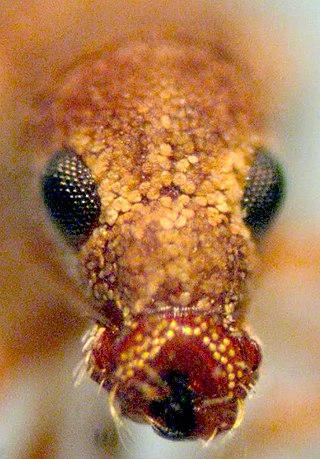
The Anypotactini are a Neotropical weevil tribe in the subfamily Entiminae. It includes 81 described species.

Ectemnorhinini is a weevil tribe in the subfamily Entiminae.

Entimini is a Neotropical weevil tribe in the subfamily Entiminae that includes 46 described species.

Eustylini is a primarily Neotropical weevil tribe in the subfamily Entiminae.
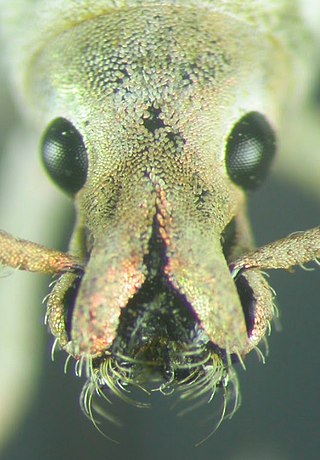
Compsus is a genus of broad-nosed weevils in the family Curculionidae, distributed across the Americas, primarily in northern South America.

Pandeleteius is a genus of broad-nosed weevils in the family Curculionidae. There are over 150 described species in Pandeleteius, distributed across the Americas. Most species in the genus were described by Anne Howden.

Platyomus is a genus of broad-nosed weevils in the family of beetles known as Curculionidae. There are at least 40 described species in Platyomus.
Tachygonus is a genus of flea weevils in the beetle family Curculionidae. There are more than 80 described species in Tachygonus.

Hadromeropsis is a genus of broad-nosed weevils in the beetle family Curculionidae.

Polyteles is a South American genus of broad-nosed weevils in the subfamily Entiminae, tribe Entimini. There are seven described species distributed in Argentina, Bolivia, Brazil, Ecuador, Paraguay, Peru, and Uruguay.
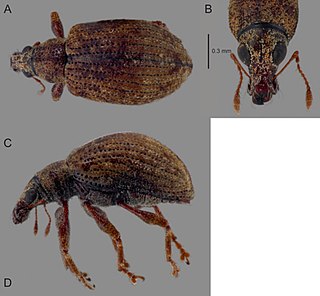
Apodrosus is a Caribbean genus of broad-nosed weevils in the subfamily Entiminae, tribe Polydrusini.
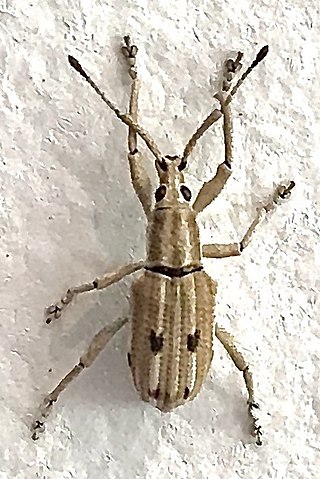
Eustylus is a neotropical genus of broad-nosed weevils in the subfamily Entiminae, tribe Eustylini.
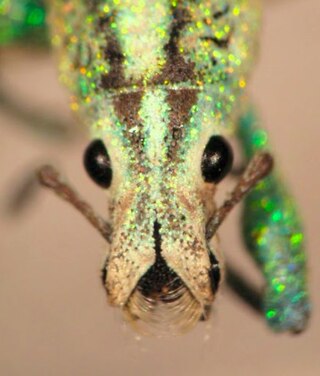
Oxyderces is a genus of broad-nosed weevils in the family Curculionidae distributed in South America. It can be recognized by the presence of dense setae on the apex of the rostrum and postocular setae.

Exorides is a genus of broad-nosed weevils in the family Curculionidae, tribe Eustylini, distributed in northern South America.
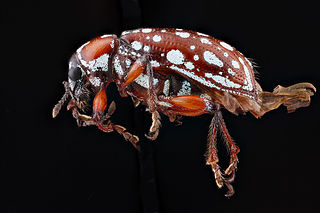
Lachnopus is a genus of broad-nosed weevils in the family Curculionidae distributed in the Caribbean Region.

Brachyomus is a Neotropical genus of broad-nosed weevils in the subfamily Entiminae, tribe Eustylini.

Anypotactus is a genus of broad-nosed weevils in the beetle family Curculionidae, subfamily Entiminae, tribe Anypotactini, present across Central and South America. There are six described species in Anypotactus.

Cyrtomon is a genus of broad-nosed weevils in the beetle family Curculionidae, present only in South America. There are six described species in Cyrtomon.


















